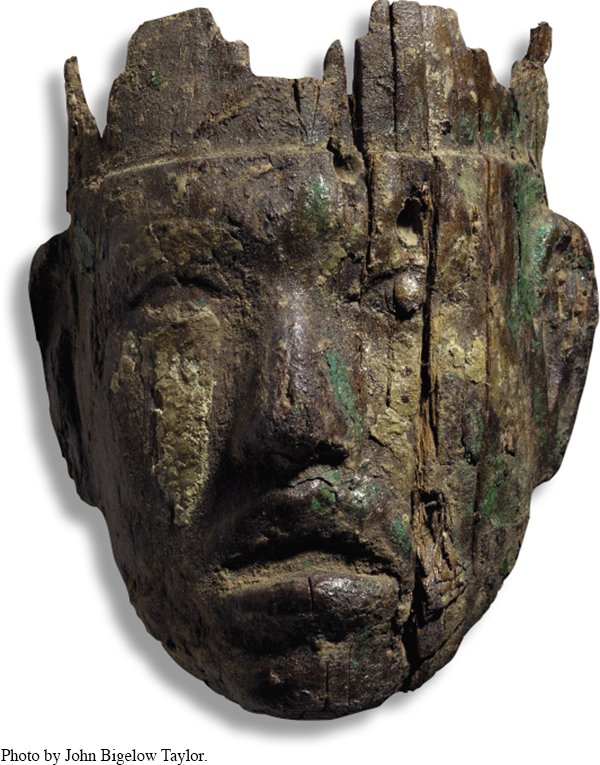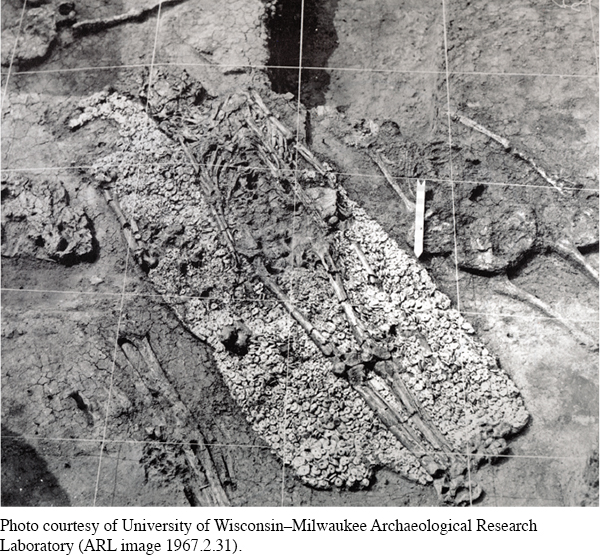The American Promise: Printed Page 1
The American Promise, Value Edition: Printed Page 1
The American Promise: A Concise History: Printed Page 2
Introduction to Chapter 1
The American Promise: Printed Page 1
The American Promise, Value Edition: Printed Page 1
The American Promise: A Concise History: Printed Page 2
Page 11
Ancient America
Before 1492

CONTENT LEARNING OBJECTIVES
After reading and studying this chapter, you should be able to:
Distinguish archaeology and history as disciplines, and understand the possibilities and limitations of both.
Identify the earth’s first human inhabitants and what developments allowed them to migrate to the Western Hemisphere.
Differentiate between Archaic hunter-
gatherers and the Paleo- Indians, and identify the main characteristics of their cultures. Explain how the Archaic peoples transitioned from being nomadic hunter-
gatherers to relying on agriculture and permanent settlements. Identify the major Native American cultures that flourished in North America on the eve of Columbus’s arrival and the similarities among them.
Describe the structure, influence, and expanse of the Mexica (Aztec) empire on the eve of Columbus’s arrival.
NOBODY TODAY KNOWS HIS NAME. BUT ALMOST A THOUSAND years ago, more than four hundred years before Europeans arrived in the Western Hemisphere, many ancient Americans celebrated this man—
What we know about Sun Falcon and the Cahokians who buried him has been discovered by archaeologists—
The American Promise: Printed Page 1
The American Promise, Value Edition: Printed Page 1
The American Promise: A Concise History: Printed Page 2
Page 2Atop Monks Mound, political and religious leaders performed ceremonies watched by thousands of Cahokians who stood on a fifty-

Before Cahokians lowered Sun Falcon into his grave sometime around AD 1050, they first placed the body of another man facedown in the dirt. On top of that man, Cahokians draped a large cape made of 20,000 shell beads crafted into the likeness of a bird. They then put Sun Falcon faceup on the beaded cape with his head pointing southeast, aligned with the passage of the sun across the sky during the summer solstice. Experts speculate that Cahokians who buried Sun Falcon sought to pay homage not only to him but also to the awe-
To accompany Sun Falcon, Cahokians also buried hundreds of exquisitely crafted artifacts and the bodies of seven other adults who probably were relatives or servants of Sun Falcon. Not far away, archaeologists discovered several astonishing mass graves. One contained 53 women, all but one between the ages of fifteen and twenty-
Nobody knows exactly who Sun Falcon was or why Cahokians buried him as they did. To date, archaeologists have found no similar burial site in ancient North America. Most likely, Sun Falcon’s burial and the human sacrifices that accompanied it were major public rituals that communicated to the many onlookers the fearsome power he wielded, the respect he commanded, and the authority his survivors intended to honor and maintain. Much remains unknown and unknowable about him and his fellow Cahokians, just as it does with other ancient Americans. The history of ancient Americans is therefore necessarily incomplete and controversial. Still, archaeologists have learned enough to understand where ancient Americans came from and many basic features of the complex cultures they created and passed along to their descendants, who dominated the history of America until 1492.
CHRONOLOGY
| ca. 400,000 BP |
|
| ca. 25,000– |
|
| ca. 15,000 BP |
|
| ca. 13,500– |
|
| ca. 11,000 BP |
|
| ca. 10,000– |
|
| ca. 5000 BP |
|
| ca. 4000 BP |
|
| ca. 3500 BP |
|
| ca. 2500 BP |
|
| ca. 2500– |
|
| ca. 2100 BP–AD 400 |
|
| ca. AD 200– |
|
| ca. AD 500 |
|
| ca. AD 500– |
|
| ca. AD 800– |
|
| ca. AD 1000– |
|
| ca. AD 1325– |
|
| AD 1492 |
|